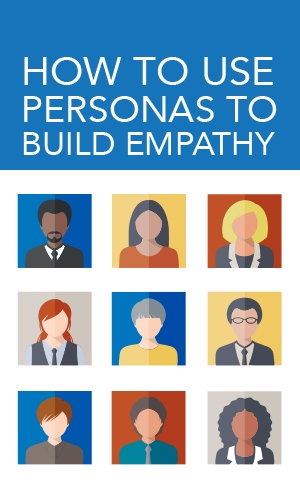One of the stumbling blocks teams encounter when developing company-wide personas is how to represent a multitude of customers with only three or four personas.
Persona development often starts because an organization wants to deliver relevant services by getting to know the needs and wants of its customers. As the  project team begins to conduct research with customers, it feels the relief of finally being able to listen to and connect with the customer. However, when it is time to create the personas, the team struggles under the constriction of ‘bucketing’ these fine people into yet another insensitive category disguised as a ‘persona.’ After all, isn’t that what we are trying to avoid?
project team begins to conduct research with customers, it feels the relief of finally being able to listen to and connect with the customer. However, when it is time to create the personas, the team struggles under the constriction of ‘bucketing’ these fine people into yet another insensitive category disguised as a ‘persona.’ After all, isn’t that what we are trying to avoid?
The book, ‘The Culture Map: Breaking Through Invisible Boundaries of Global Business,’ presents a great analogy for teams struggling at this stage in the process.
Hang with me for a minute –
The author, Erin Meyer, introduces the cultural differences of various countries using eight scales:
- Communicating (low-to high-context)
- Evaluating (direct to indirect negative feedback)
- Persuading (principles to applications first)
- Leading (egalitarian to hierarchical)
- Deciding (consensual to top-down)
- Trusting (task-based to relationship-based)
- Disagreeing (confrontational to avoiding confrontation)
- Scheduling (linear to flexible time)
Using the scale, you can easily compare your culture to that of an international colleague or team. Armed with this information, you can bring meaning, understanding and empathy to your interactions. For example, let’s say your company just transferred someone into your team from your Tokyo office. Knowing that the Japanese style of leading is significantly more hierarchical than we see in America, adjusting your management style will likely make your new employee both more comfortable and more effective, and you’ll see better results.
The link between personas and the culture map is beautifully summarized by Meyers, ‘Of course, individual responses vary, but a normative pattern emerges.’
Customers are like snowflakes. No two are alike.
When creating personas, we are looking for normative patterns. This doesn’t mean the individual is insignificant. Rather, these patterns allow us to build personas as a guide to help our teams bring more meaning, understanding and empathy to our interactions with customers we haven’t yet met.
The guide you are creating isn’t rigid, but rather a sliding scale. Just as every customer is unique, so should be your interactions with him or her.



